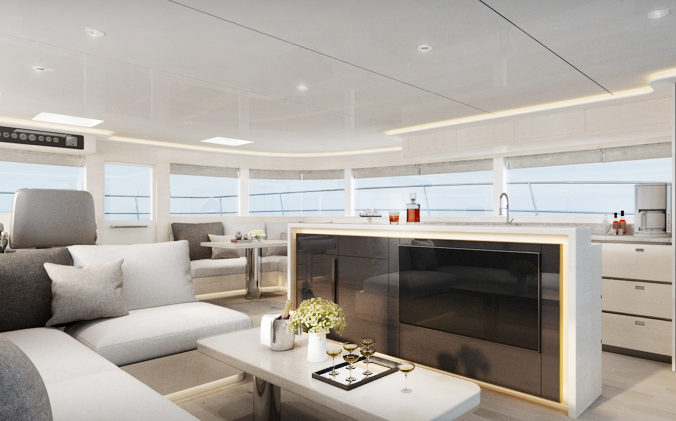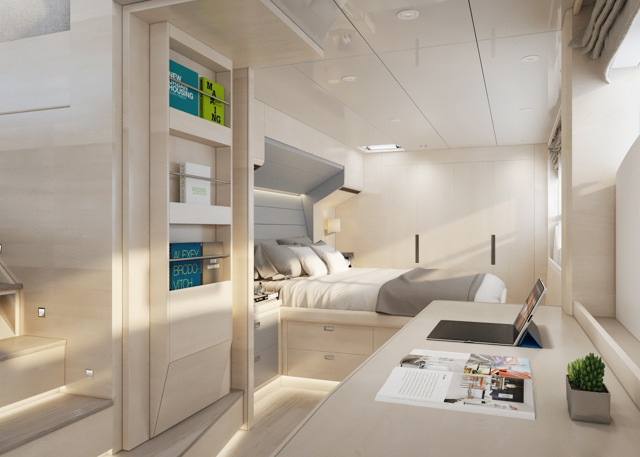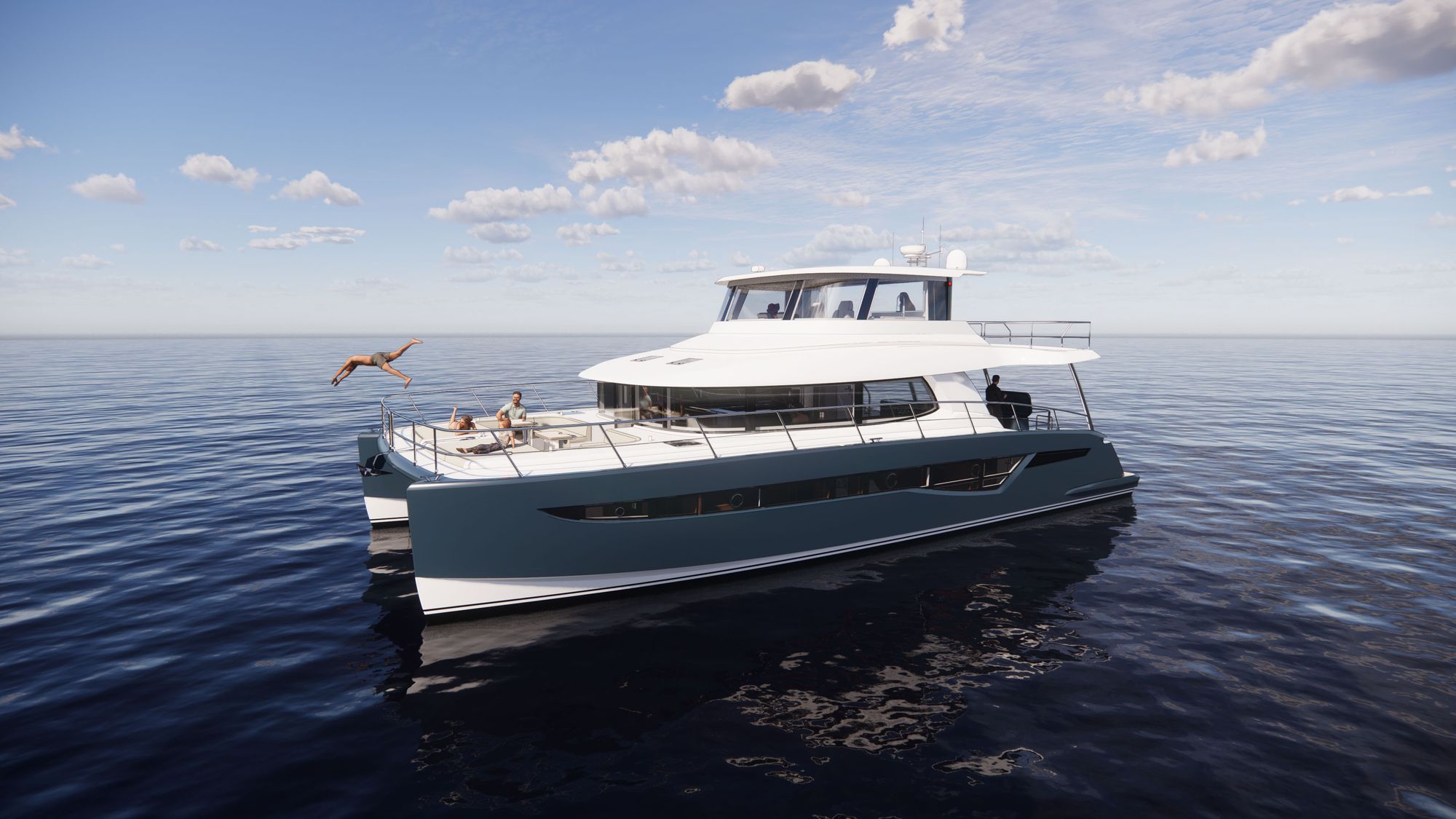How we chose our boat
I (Gavin) have owned boats since I was a teenager, mostly fishing boats and sailing yachts. But to fulfil our dreams of long range cruising we would need to step it up a bit. This boat needed to be able to safely cross oceans and be roomy enough for two people (and 2 cats) to live on.
We started looking in earnest in 2018 and I was keen to get down to the Sydney boat show to check out a 46ft sailing catamaran premiering at the show. It was a really nice boat but we found the galley and bedrooms were too small considering we would be full time living aboard. We were going to need a bigger boat!
Strolling around looking at other boats at the show we came across a newly introduced 50ft power catamaran. Say what, Power? Hmmm... hadn't considered that. After chatting with Christine a bit we started to warm to the idea. No sail changes at night on a pitching deck was an appealing idea from a safety aspect. Plus it turns out the running costs of sail vs power are actually pretty close.
We were able to get a ride on a 70ft version of this new power cat a few days later. Very, very impressive vessel but way too big for just the 2 of us. At this size it becomes really hard to find somewhere to park it. We then flew up to Hamilton Island to sea trial the 50. Super impressive, but still not quite the galley or sleeping quarters space we were looking for, and it didn't have a front cockpit, but could we live with this given everything else was so good?
In the mean time, since we were looking at power, I thought why not check out trawler style boats? These are purpose built long distance passage makers that are considered very safe and economical to run albeit somewhat slower. There was a listing for a 55ft De Fever and so we rang the broker one Saturday morning. De Fever's have a reputation for being very capable open ocean vessels, but this one wasn't going to work for us. To small again and being a displacement monohull it was very rolly as evidenced when a ferry went past.
However we started chatting a bit more with the broker - Mark. We explained what we were looking for and he started researching options.
We should mention our list of must haves/nice to haves at this point. Most of these come from owning our 2 sailing boats that we've cruised up and down the coast the last 10 years.
Must haves:
- ISO CE Category A Offshore certified (seas < 7 meters, winds < 47 knots).
- Shallow draft of 4ft or less.
- Ability to economically cross oceans. Maybe not the Atlantic, but certainly smaller jumps like across the ditch to NZ. In a cat this means a tunnel with at least 1 metre of clearance and high bows with plenty of reserve buoyancy.
- "Off grid" - i.e. have the ability to stay away from marinas for weeks at a time, being self sufficient in terms of power and water.
- Front cockpit for sundowners. We've chartered cats with a front cockpit and let me tell you there is no better place to hang out at sunset with a nice cool trade wind breeze in your face and a refreshing G & T in your hand.
- Galley with loads of storage space and a large house sized fridge, plus plenty of freezer space for extended passages.
- At least 3 staterooms. King sized walk around bed in the master.
Nice to haves:
- 360° views from the salon.
- Ability to stow a largish dinghy. When you are a live-aboard the dinghy is the equivalent of your car so you want something big enough to carry lots of groceries/supplies and quick enough to be able to explore areas around an anchorage.
- Ability to beach the boat on a sandbar in order to do maintenance.
- Hydraulic swim platform that can be lowered into the water (the so called 'Teak Beach').
- Washing/Drying machine.
So, back to Mark. After a few weeks he came back to us and presented the Granocean W55. The builders/designers at Granocean have a history going back to Jet Tern who built the Selene trawlers. Initially we weren't too taken in as it didn't have that front cockpit we wanted but it turns out that was an option.

Over the course of several weeks we went back and forth and it became clear that a) this boat would have the right amount of space we were looking for and b) the yard was very willing to work with us building out a semi-custom boat that would tick all our boxes. We we were impressed and despite there being no actual boats built yet (ours would be the first) we signed on the dotted line!




After that we got down to the business of figuring out specifications and getting in to the galley/cockpit/etc layout details. Mark has been living on a boat for years so his insights and suggestions have really been appreciated. He obsesses over details like where water flows off the boat, or more importantly making sure it will not pool up and create problems down the track. There were a couple of design influences he added including the 'extended flybridge' which provides greater protection to the aft cockpit and houses the outdoor rain shower heads. He also made sure to maximize the use of available space and I think his pièce de résistance must surely be the day head situated under the flybridge stairs.
As I write this in August 2021 we are well down the path of getting the boat built. A major and unexpected bonus happened when Vripack came on board to do the interior design (see video below). Covid has set us back a little but we are expecting delivery hopefully around the end of the year. We'll write more about this and some of the specific decisions we made on equipment choices in later posts.
